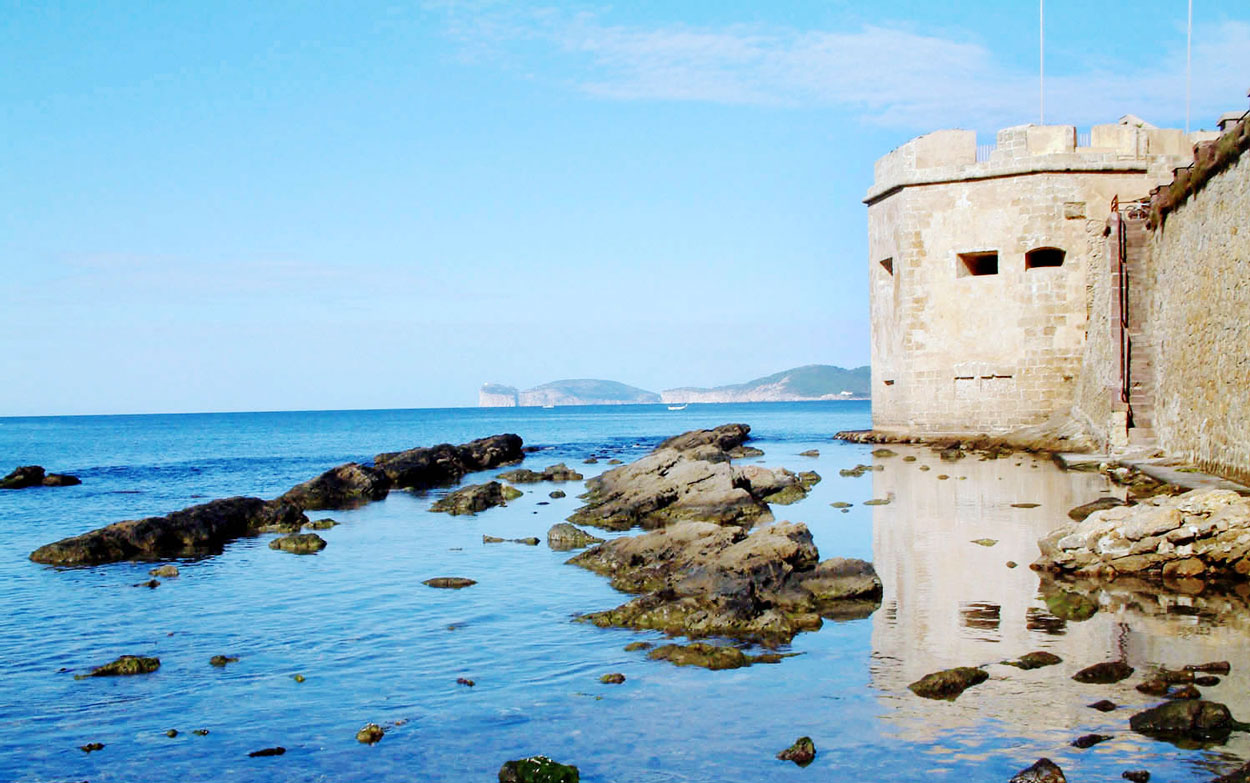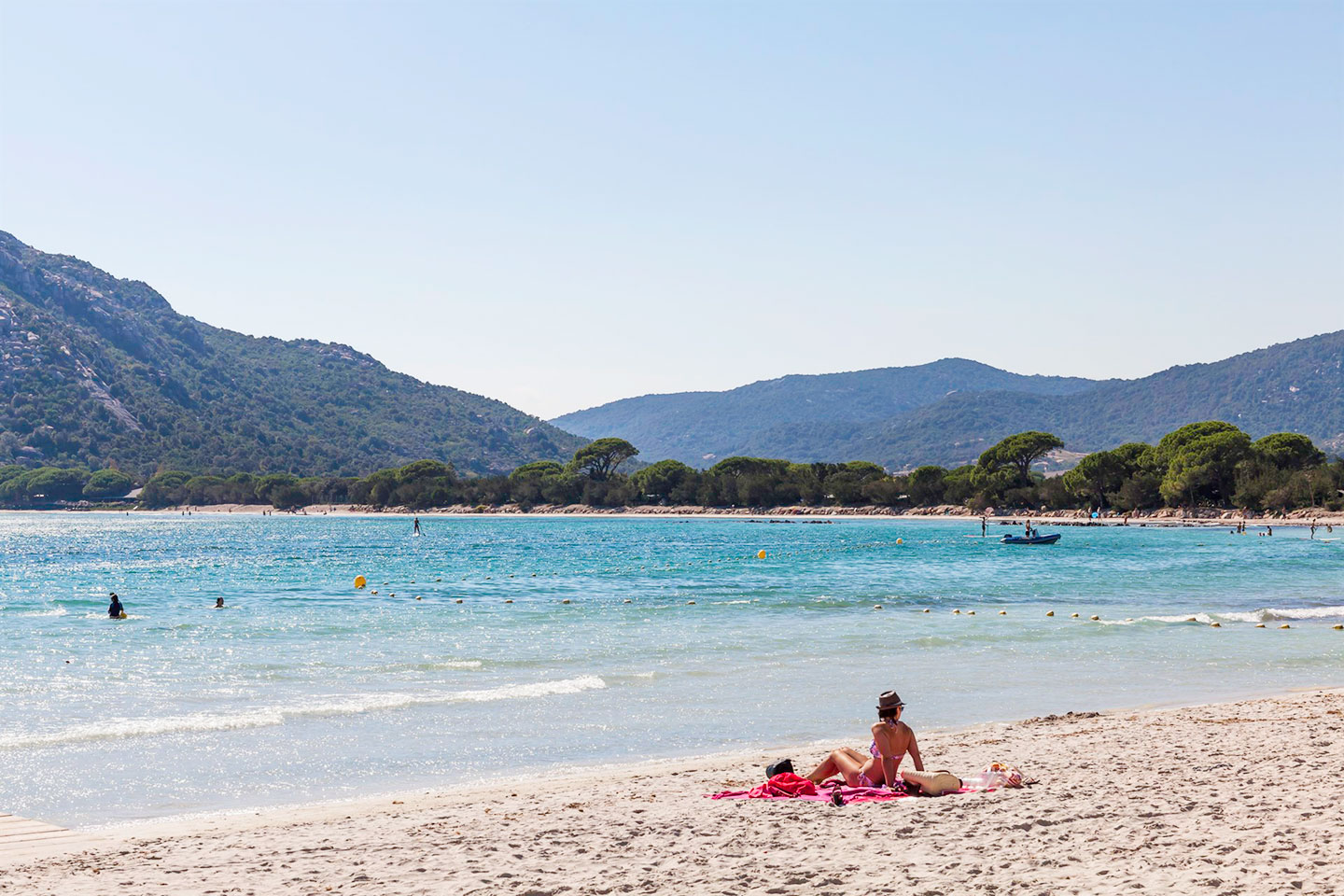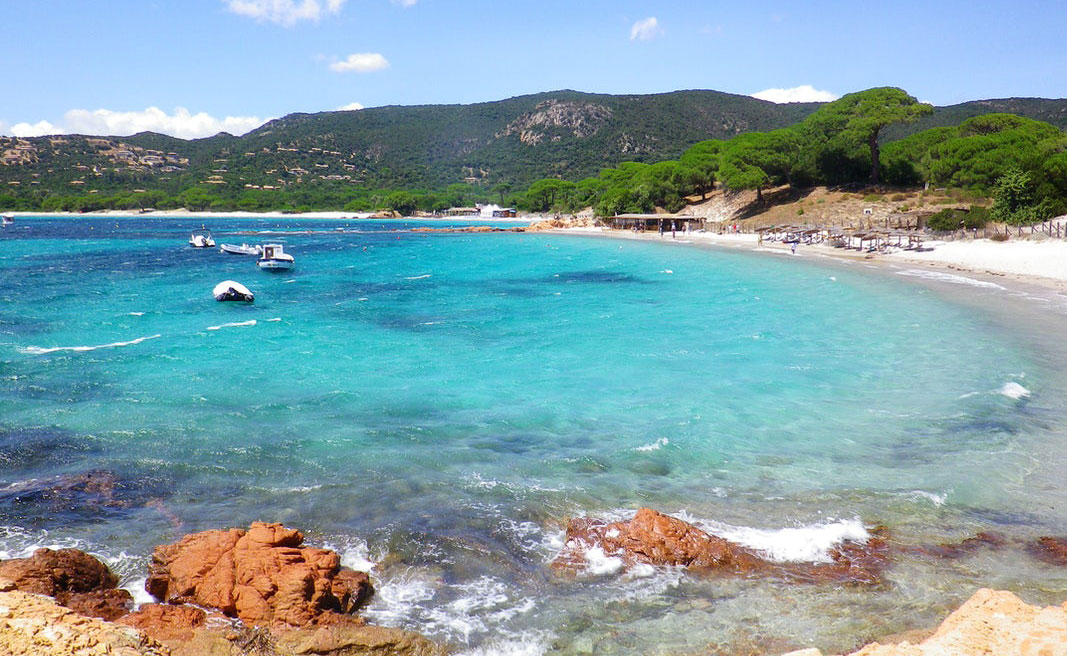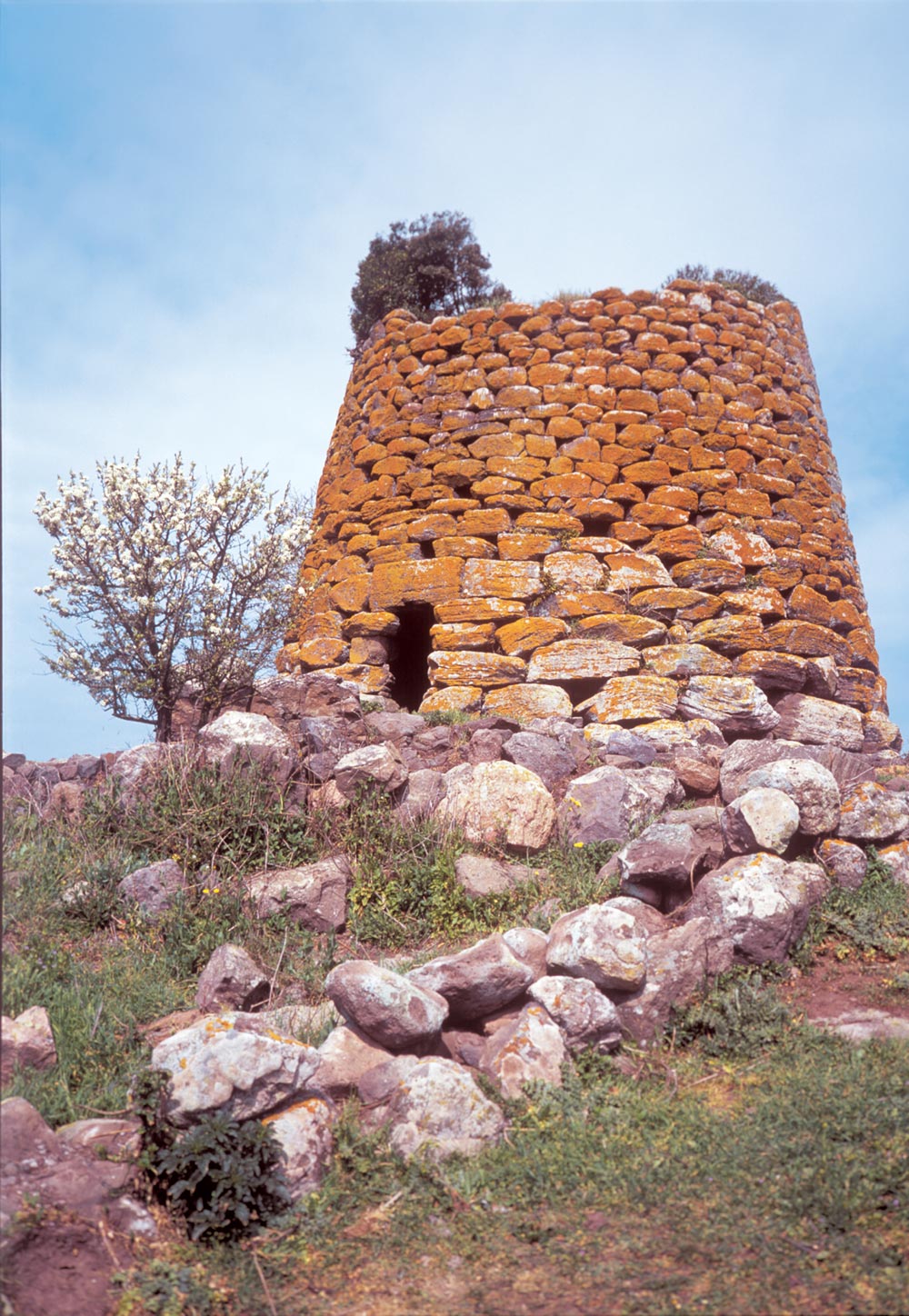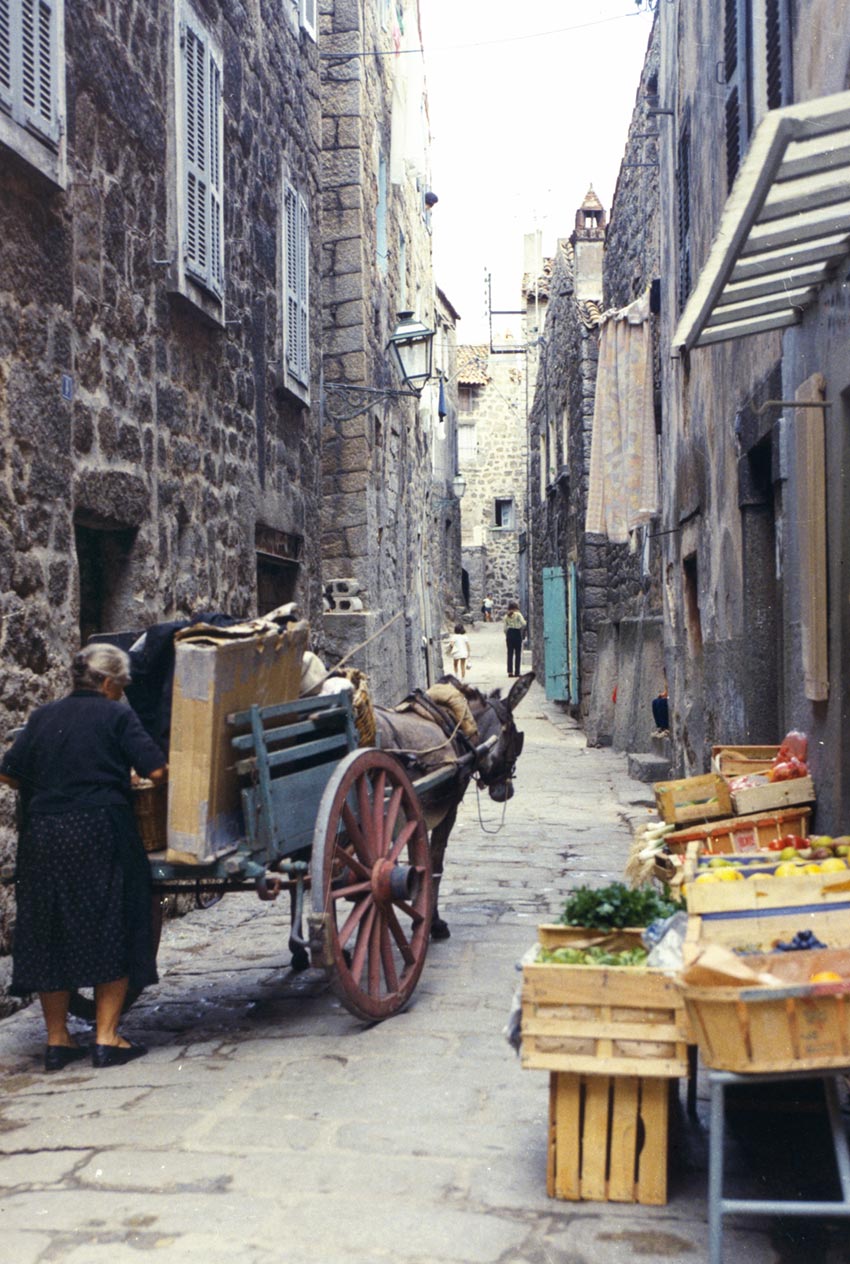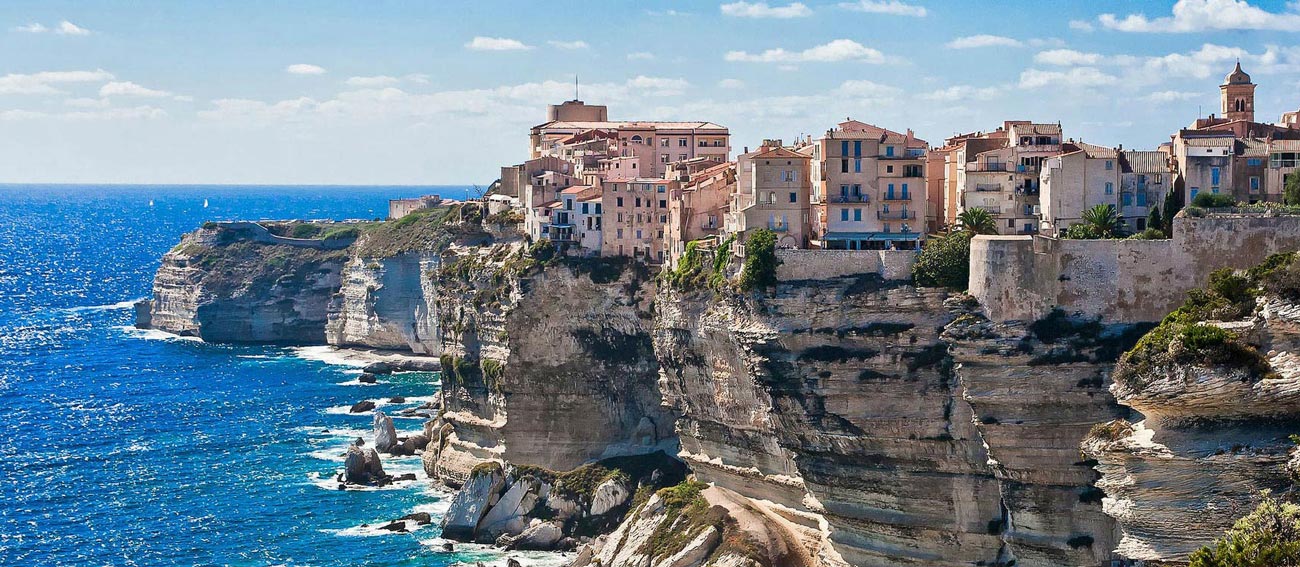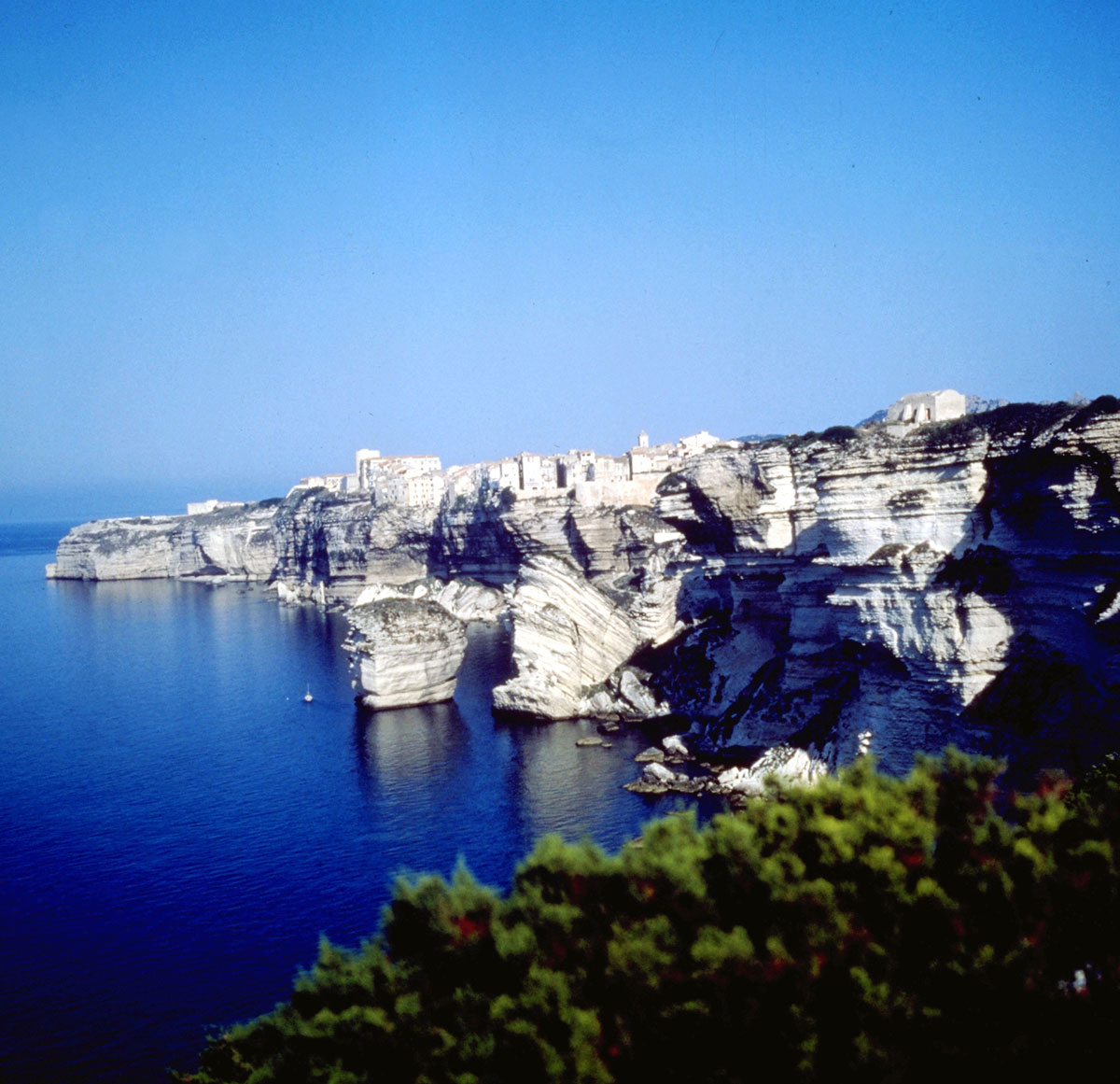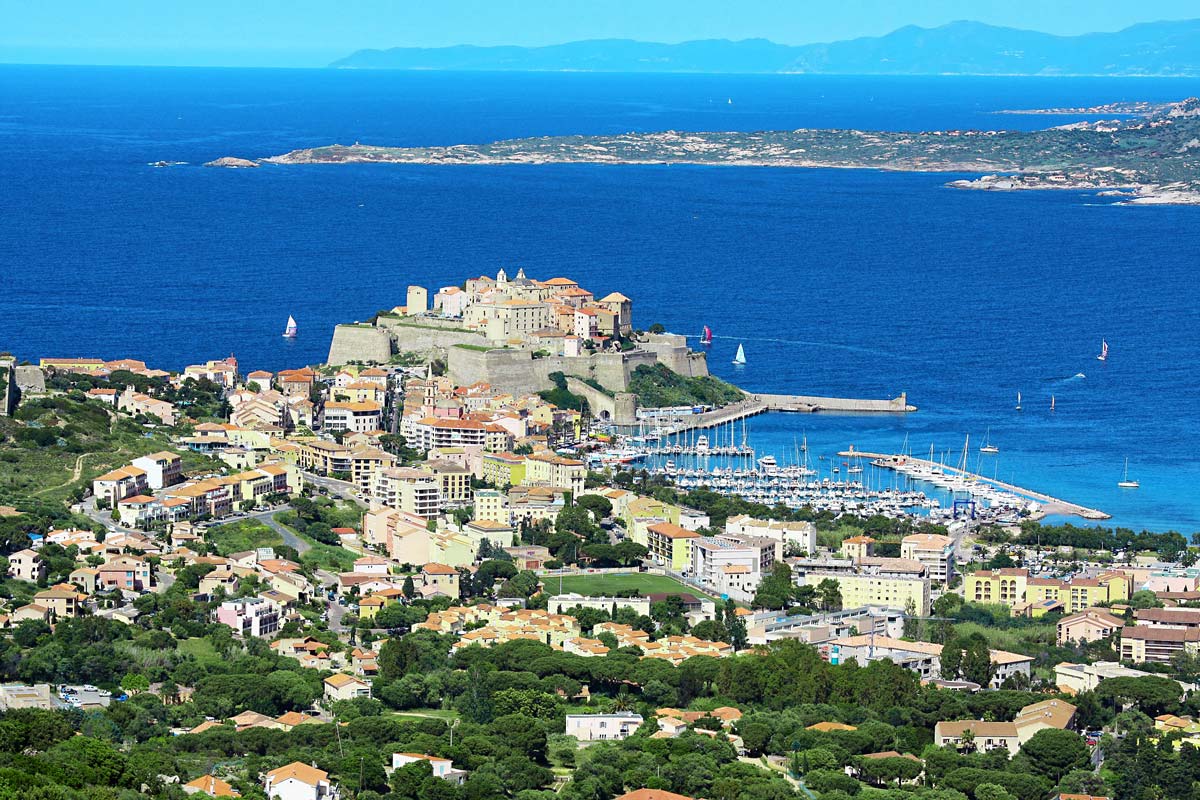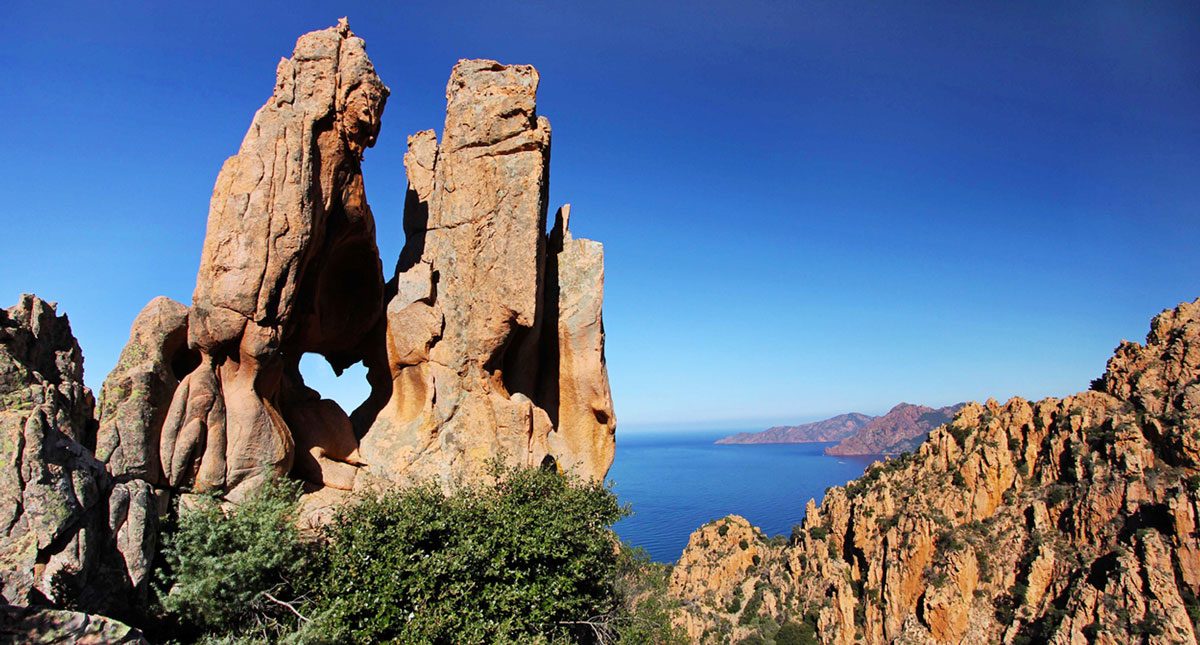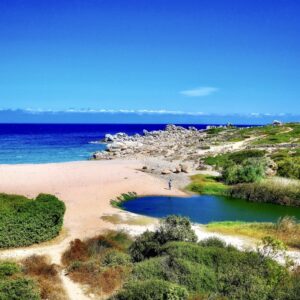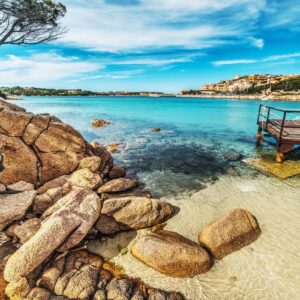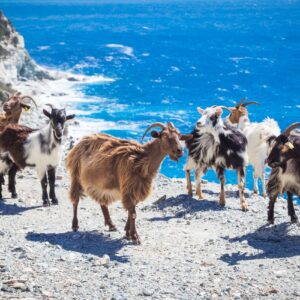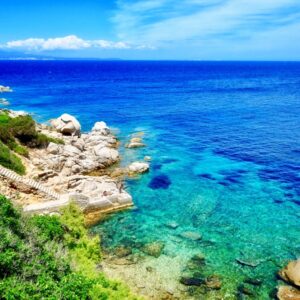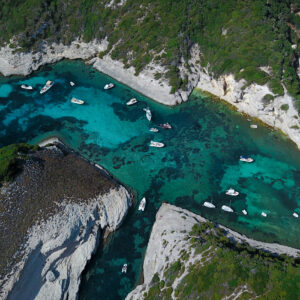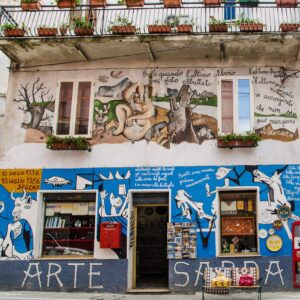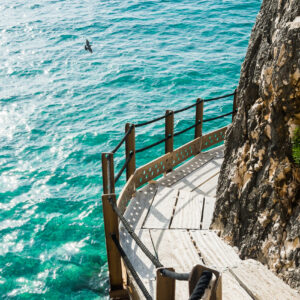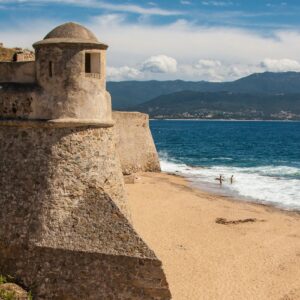Sardinia
and Corsica
Alghero, Castelsardo,
La Maddalena, Costa Smeralda,
Oristano, Sant’Antioco, Carloforte, Villasimius, Cagliari
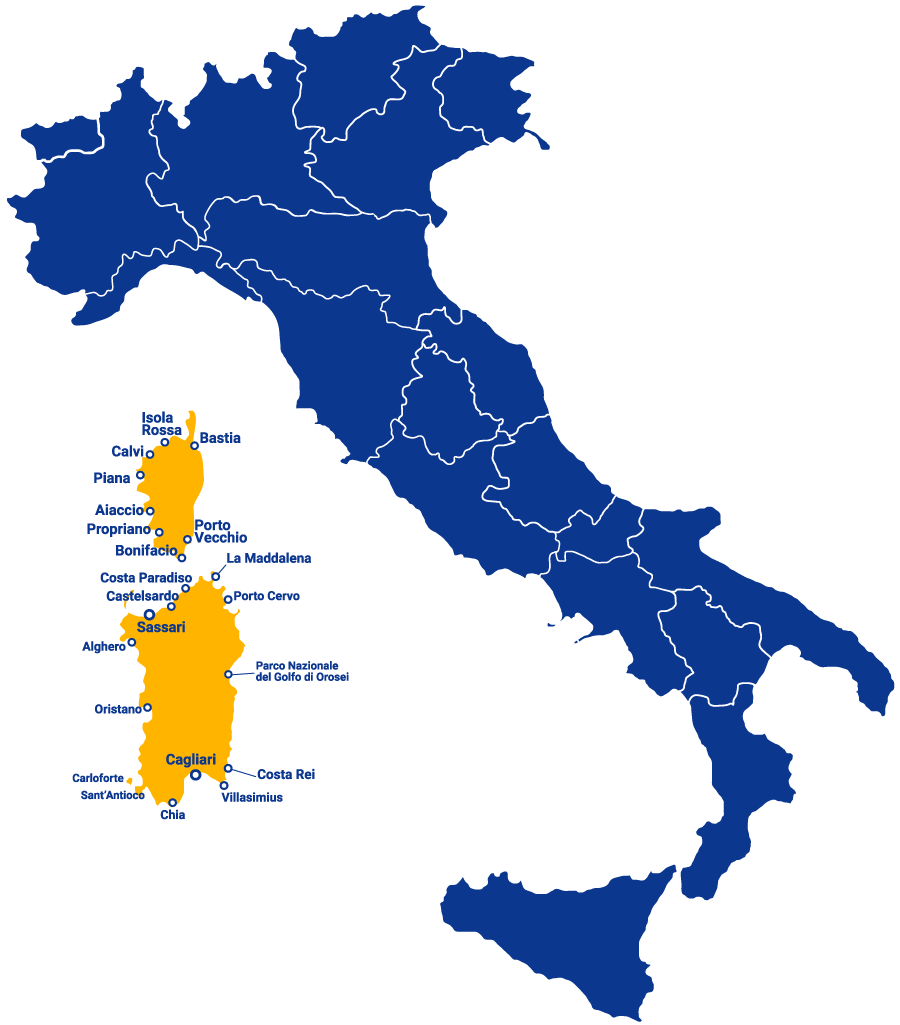
In the middle of the Mediterranean Sea, the second largest Italian island, Sardinia strikes visitors with surprising contrasts, ancient traditions and a wild nature…
… Hundreds of kilometers of exquisite sandy beaches, turquoise waters, hidden bays and characteristic coves make Sardinia one of the most sought-after tourist destinations in Europe.
Porto Torres boasts a Roman archaeological site Turris Libisonis and the pre-Nuragic megalithic monument of Monte d’Accoddi.
Near Stintino, enjoy the fabulous La Pelosa beach and the Asinara National Park, a perfect habitat for donkeys, wild sheep and peregrine falcons.
The hilltop medieval town of Castelsardo, towers over everything on a grey rocky promontory. Nearby stands the popular rock known as “Elefante”, eroded by the wind into an elephant shape.
From the lovely beaches of Costa Paradiso (Paradise Coast) travelers can see the red granite rugged coastline and blue sea of the Isola Rossa (red island).
There is then Capo Testa, an extraordinary lighthouse-topped headland.
Santa Teresa, in the “Gallura” region, dominates over the strait of Bonifacio, which separates Sardinia from Corsica. It’s a departure point for ferries heading to Corsica island.
The archipelago “La Maddalena”, one of Sardinia’s most ravishing beauty spots, provides some of the most spectacular, windswept seascapes in the region. Like the “Roccia dell’Orso” (Bear rock), the Caprera island with Cala Coticchio beach or Spargi and Budelli islands with the enchanting “Spiaggia Rosa” (pink beach).
In Baia Sardinia we find luxury hotels and dream villas hidden by Mediterranean vegetation.
The Costa Smeralda (Emerald Coast) is an undeniably beautiful area with Porto Cervo, the summer destination of the international jet-set, set as a gem.
Sardinia is the only region in Italy that produces cork and, in the Gallura Region, Tempio Pausania is the heart of cork cultivation.
Surrounded by vineyards and citrus groves, Orosei has many fine Spanish-style palazzi and medieval churches, signs of its prosperous past.
Nuoro bustles with cultural life. As well as visiting the Deledda Museum, birthplace of the Nobel prize winner writer, the town has a superb “Museum of Sardinian Life and Popular Traditions”. The popular festival “Sagra del Redentore” features folk groups from all over Sardinia.
In Mamoiada, near Nuoro, a striking experience is the Mamoiada Carnival, one of the oldest folk celebrations in Sardinia, with “Mamuthones” and “Issohadores” traditional masks.
Orgosolo is the most well-known town in the Barbagia area: vibrant graffiti-style murals adorn the village’s buildings. It’s also the land of the “Canto a Tenore” polyphonic folk singing, proclaimed an Intangible UNESCO cultural heritage.
The area of Gennargentu, a particularly beautiful mountain range, is perfect to undertake a number of outdoor activities, trekking in particular.
Along Sardinia’s west coast, explore ancient towns, mystical sites and secluded beaches.
Alghero, thanks to its Catalan Gothic architecture, is known as the “Barceloneta” of Sardinia. The golden sea walls are crowned by a pedestrianised path that commands memorable views over to “Capo Caccia”. Near Alghero, the Neptune’s Grotto is an incredible natural wonder.
Bosa is one of West Sardinia’s most beautiful towns, with pastel-coloured houses stacked on a steep hillside and fishing boats moored along the river Temo.
In Cabras, the Roman archaeological site Tharros offers a breath-taking view of the sea. Not far away, the tiny “spaghetti-western village” called San Salvatore.
Oristano offers a picturesque setting with the renaissance palaces and squares full of restaurants, hidden patios and baroque churches.
Nearby, the Giara Park is home to a rare herd of wild ponies; the area is also famous for some beautiful cork oak woods.
Cagliari, popular for the several colonies of pink flamingos of the lagoon, is the city of the Festival of Sant’Efisio, one of the most important religious and folklore events in Sardinia.
Near Pula you can reach the archaeological site of Nora, an ancient Phoenician city that lies in a stunning location in front of the sea.
Carbonia, home of some decommissioned coal mines in Italy, boasts an interesting coal museum. The island Sant’Antioco, populated since prehistoric times, is the oldest settlement on Sardinia.
The real beauty of southern Sardinia is the coast with white and sandy beaches and a transparent blue tropical-like sea water.
The island of San Pietro, the second largest island after Sant’Antioco in the Sulcis archipelago, is a paradise for diving, snorkelling, fishing and birdwatching. Most of its inhabitants are descendants of the Ligurian coral fishers who established a corner of Liguria in Sardinia.
Villasimius is a charming fusion of picturesque beaches, historical culture, lively nightlife and typical Sardinian way of life.
Costa Rei is one of the most beautiful areas in Sardinia: 30 km of scenic coastal road and 8 km of white sandy beach including Cala Pira, Cala Sinzias and Cala Marina.
Sardinia combines sea and nature with folk traditions, mysticism and curiosities, like the mysterious giant’s tombs and the Nuragic constructions. These stone towers are the biggest and best-preserved megalithic monuments in Europe. The most important Nuragic town is Su Nuraxi di Barumini near Cagliari, inscribed on the UNESCO’s World Heritage List.
Sardinian rugs, tapestries, wool, cotton and linen cushions abound all over the island, as well as graceful woven palm baskets.
Sardinian gold and filigree workmanship and the unusual cork creations are very particular.
Sardinian food is often based on simple and natural ingredients like wheat, used to make the “carasau” crispy bread, but also the well-known “fregola” pasta.
Try the grilled porceddu served on cork trays and covered in myrtle branches. Or the lobster of Alghero, the “bottarga” of Cabras and the Carloforte tuna fish. Pecorino cheese pairs perfectly well with carasau bread and a glass of Cannonau or Vermentino di Gallura wines. Myrtle liqueur, made from the berries of the myrtle plant, is typically used as a digestive. Among Sardinian traditional sweets, the “pardula” is a must!
Known as “The Island of Beauty”, Corsica is the fourth largest Mediterranean island…
… Situated just 12km north of Sardinia and still relatively unknown, it’s a small yet intriguing island boasting ancient buildings, winding cobbled streets, stunning coastlines, paradisiacal beaches and rugged mountains. Bastia, capital of the “Haute-Corse” department, is the most important commercial port town on the island with three sections of particular interest: the old harbour with the busy water front, the trendy fifteenth-century citadel and the old town with the Place du Marché.
Cap Corse is a 40-kilometre long attractive peninsula dotted with picturesque fishing villages and ancient Genoese defending towers. The road from Miomo, Erbalunga and Macinaggio to Centuri and Patrimonio offers spectacular views of the ocean. In Patrimonio, along its main street, many wineries offer wine tasting of some of Corsica’s best wines.
Saint-Florent is a small coastal town with an attractive harbour and a small fort. It’s located on a promontory in a natural bay with a scenic backdrop of mountains. The area is also known for the “Desert des Agriates”, a 5,000-hectare protected area with sandy beaches between St Florent and Ile Rousse. Perfect for trekking, pathways wind to the Loto beach and the Martello tower, two of the region’s most popular attractions.
Before reaching Calvi, the quiet Ile Rousse (literally “red island”, from the red colour of rocks) is worth a visit, with its covered marketplace surrounded by plane trees.
The port town Calvi, in the Balagne region, is best known for its beautiful Roman architecture and the stunning view of the bay from the top of the citadel built on the windswept rock overlooking the port.
Corte with the impressive 15th-century citadel, is a cobbled little town, perched on the edge of a mountain. Hundreds of steps lead to little squares dotted by pastel coloured churches and charming buildings with blue painted shutters.
Ajaccio, the largest settlement on Corsica, is Napoleon Bonaparte’s birthplace. The “Maison Bonaparte” is now a national museum dedicated to the French Emperor’s life. The old town is very pleasant thanks to the lively port and marina, the tree-lined avenues leading to wide-open squares and the 16th century Genoese citadel. Outside the city, the ancient “Parata” Tower and the islands “Iles Sanguinaires”
Porto is a small village ideally placed for exploring some of Corsica’s most scenic highlights such as the “Calanches de Piana”, part of the UNESCO World Heritage “Gulf of Porto”: spectacular red granite high cliffs shaped by the wind, which are at their best at sunset.
Sartene, in the south of island, is known as “the most Corsican of Corsican towns. Despite a long history of piracy, today it’s a peaceful medieval-looking town renowned for its wines and the prehistoric sites of Cauria and Palaggiu with dolmens and menhirs.
Bonifacio is the oldest Corsican town and southernmost point of the island, giving its name to the strait (only 12 km wide) separating Corsica from Sardinia. The ancient fortress town is in a spectacular natural setting perched on the top of the cliffs. Easy ferry connections to Sardinia and boat trips to the Lavezzi islands make Bonifacio an important coastal resort.
On the south-eastern coast of Corsica, Porto-Vecchio is another old Genoese walled town with picturesque narrow streets and high stone houses, that is nowadays well known as a glamour town. Some very attractive beaches are Palombaggia, Tamaricciu and Santa Giulia.
Corsica’s rugged landscape provides endless opportunities for outdoor activities such as walking, hiking and off-road 4×4 tours. To be mentioned the Napoleon Trail starting from Ajaccio.
Age-old crafts like jewellery- and pottery-making are still abundant in many villages, as well as the musical tradition of polyphonic choral singing. In the Balagne region, you’ll see artisans at work, producing cosmetic and accessories.
The blend of French and Italian cuisine is one of the island’s main attractions. Corsica produces several wines and liqueurs, honey and tasty cheese.
TRAVEL OPTIONS
Sardinia & Corsica Tours
More information to enjoy traveling to Sardinia and Corsica
City Tax Sardinia and Corsica
Bus Permits Lake Garda and Veneto
Contact who takes care of your groups to Sardinia and Corsica
Veronica +39 0183 548 316
Angelica +39 0183 548 312
isole@gadis.it

